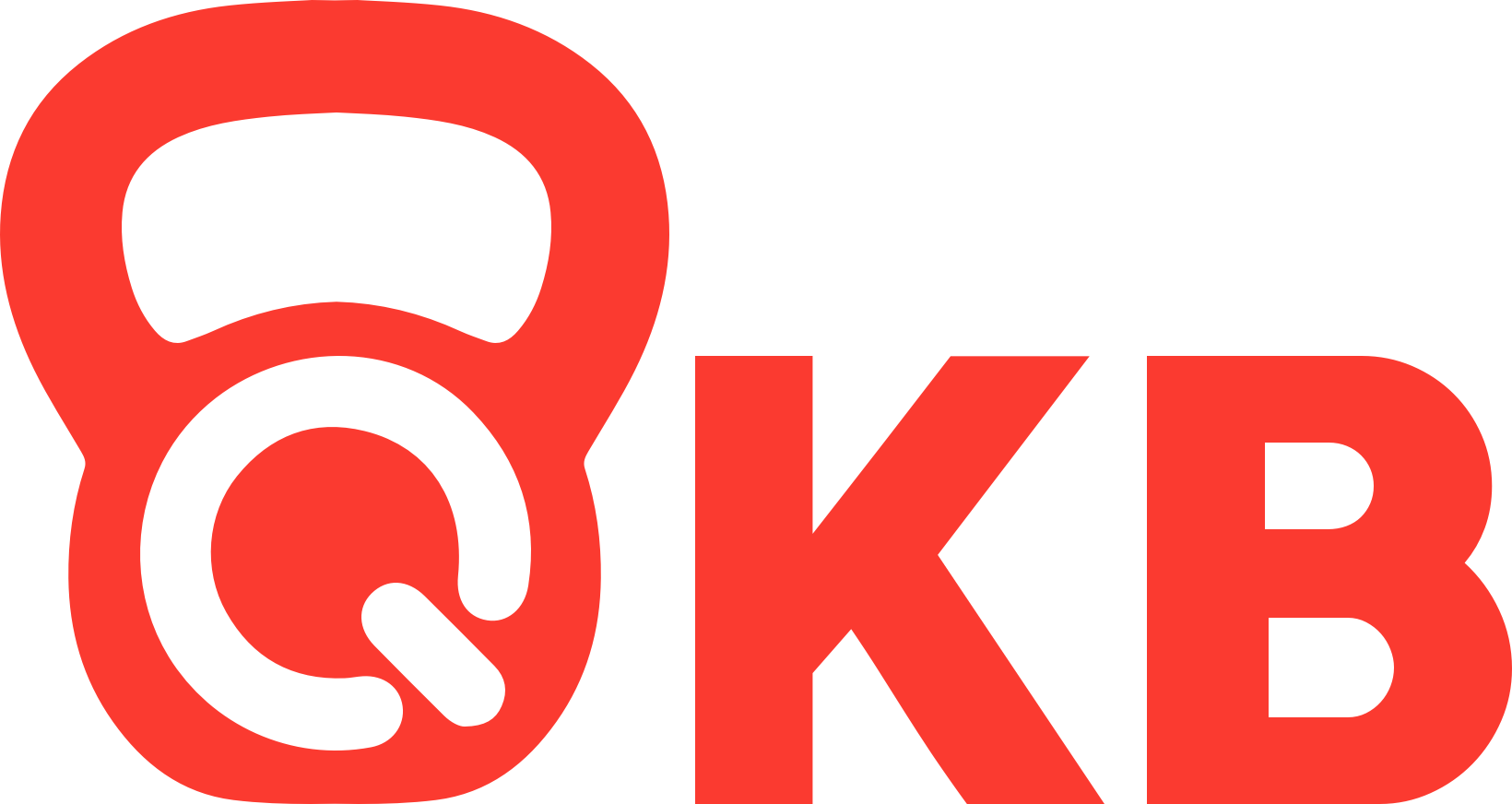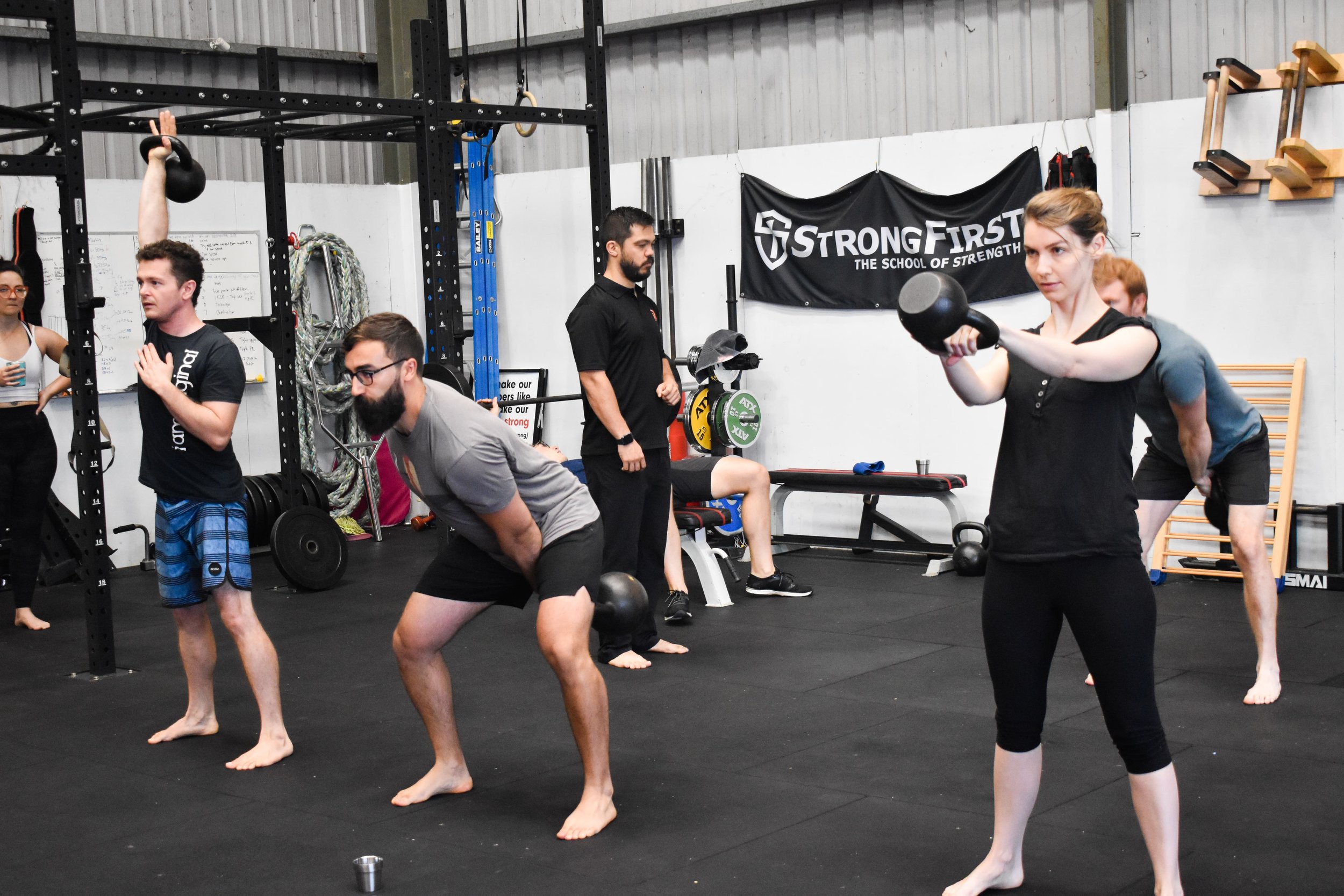What is the Kettlebell Rite of Passage?
What is the Rite of Passage?
The Rite of Passage is a three day a week program using ladders that is built around kettlebell clean and military press ladders followed by swings or snatches. The clean and press are two different movements. However, in this program, they are chained together to create a hybrid movement that links the clean (a useful midsection development and power production movement) with the military press (a powerful overhead movement that develops a solid connection from the ground to the hand in full extension). Used in tandem, these movements are amazing for improving athleticism, connectedness, and strength in one fell swoop.
My favourite kettlebell program has always been the Rite of Passage from Pavel’s Enter the Kettlebell. It’s a simple, easy to follow program that makes a huge impact upon your strength, tied togetherness, and your conditioning, and can be done in as few as three days per week. This blog is going to talk about what it is, who it might be good for, and some common pitfalls that are important to avoid.
The sets and reps are set into ladders, using a bell that is around your 7-8 rep max (the bell that you could press 7-8 times with beautiful technique, but no more), and performing sequentially larger sets before resetting. For instance, a clean and press ladder to three (written 1-2-3), would involve one clean and press left, one clean and press right, and then a rest (or even a rest between sides, which can become important as the bell becomes larger), followed by two clean and presses on each side with a rest between sides or after both sides, and then three clean and presses each side with a rest between sides or after both sides.
That whole sequence, including the rest, is one ladder, and it’s an incredibly cool way of teaching someone to practise their movement instead of mindlessly working out. The singles and doubles feel so light that they give you the opportunity to be laser-focused upon what you’re doing, while the sets of four and five, particularly towards the back end of the program, can really force you to dig deep and work hard, hopefully leveraging the beautiful practise from the lower ‘rungs’ of the ladder.
The swings and snatches in this program are sneakily effective. Each day when you’re training, you’ll perform between two and twelve minutes of snatches or swings at an effort level that ranges from around six to nine on a scale of one to ten. The program has light, medium and heavy days, and this variation allows you to get really strong and conditioned with only a single hard day each week. We had one lady in our classes who followed this training template to work up to 263 one hand swings with a 32kg bell in 10 minutes (she was around 5’10 and 75kgs at the time, and was a former runner who had found the 8kg bell heavy and intimidating when she first began training with us). These are phenomenal numbers for any human, and it was by following a quantified version of the exact program discussed in this article, and found in its entirety in Enter the Kettlebell, that she was able to achieve this.
Who is the Rite of Passage program good for?
The Rite of Passage is ideal for someone who is looking to get strong and powerful and who has about three days per week to train. In my opinion, it’s also the ideal program for most people to prepare for the StrongFirst Kettlebell Certification (SFG1). It’s also a great choice for someone who likes to have a little bit of playtime each week as it has the capacity to incorporate an additional two ‘variety’ days where you can work on skills that are complementary or train skills that you don’t want to lose.
It’s a great program for someone who has been following Simple and Sinister for a while and wants to look at something new. It will definitely take the solid foundation built by Simple and Sinister and will enable you to build fearsome overhead strength and additional athleticism. A man who can go through the program with a 24kg kettlebell will find that he is capable of addressing almost everything that our typical lifestyles might throw at him, a man who can do so with a 32kg kettlebell will do most of life from a strength perspective with ease. For women, they will discover that they are head and shoulders above most women that they meet if they can perform the full program well with a 12kg bell, and once the program is done safely with the 16kg bell, then daily life will almost never be an issue (as I say to my wife, if she has to use significant effort to do something, she’s not doing it the way that it was designed to be done!).
It’s also a great introduction to presses and snatches because, when you pick the correct bell for each movement, you are able to practise with non-threatening loads where you can be really present and focused, allowing you to develop the neural pathways and the physical conditioning to get good at the movement.
As an aside
It might seem weird to do so many easy reps in a program where you’re trying to get strong, but this is actually how really strong people usually train. A Romanian sports scientist called Tudor Bompa who is famous for his theories on the way most elite sportspeople train these days (periodisation), noted that most brain development for sport can happen at 65% effort, and most physical development for sport can happen at 85% effort, so it makes sense to spend most of your time training there, with periodic efforts above 90%.
Things to watch out for
This program is fantastic, if you follow it, and if your technique is sound, you will feel and look dramatically better after a few months. There are three common pitfalls that I want to make sure that you avoid.
The first error that people run into when they do the Rite of Passage is picking a bell that is too heavy. The program specifies something between your five and eight rep max, but I’d encourage you that there are better outcomes to be had by using a seven or eight rep max bell for longer than you need to, than by rushing and using a bell you can almost, just about, kind of press five times. Using the slightly lighter bell will ensure that you do more reps well, and spend more time doing moderately heavy work well. When the bell gets easier, you can move through the work faster, and then, after a couple of cycles, you’ll discover that the next bell size up is now ‘pressable’ for seven reps. At this point, the whole virtuous cycle can begin again.
The next common error that people make, is that they turn every swing day into a hard swing day. It’s something that might be good for your mental health today, but that probably isn’t going to lead to the long term positive gains that you want. The choice of the light, medium and heavy swing/snatch days in the program is really cleverly designed to ensure that you are promoting your health at a cellular level as well as getting strong physical and neurological gains. You’re welcome to do whatever you like, but Pavel has condensed huge amounts of research into a deceptively simple program. Ignore him at your own peril.
The final common error people make when they perform the Rite of Passage is to rush from set to set. Zatsiorsky has said, “Do as much work as possible while being as fresh as possible.” People often adhere to the first at the expense of the second. The rest period for the Rite of Passage is, simply put, enough rest to do the next set excellently. Practicing good reps will teach your brain how to be more efficient and recruit more muscle more effectively, and when you do that you can lift heavier weight which will allow you to create a greater physical response. Practising good reps also minimises the likelihood of injury, both with the light bells, and when you push to attempt a heavier press. Take the rest you need, and in the long term you’ll press heavier, and you’ll press healthier.
KB201: The Rite of Passage Workshop
The last thing that I’ll note is that Strongfirst has recently brought out a Rite of Passage workshop. This workshop teaches you how to perform the movements necessary for the program, some useful stretches that will support the program, and an alternate style of programming that is complementary to the original plan. I actually really like to combine the two programs for some clients depending upon their goals, and if I’m running the workshop, I teach that too.
You absolutely don’t need to do the workshop. The book, Enter the Kettlebell, gives you a solid running start. Attending the workshop allows an experienced StrongFirst Certified Leader to look at your movement, and getting clarifications for your current situation, provide you with the best possible launchpad for future success.


